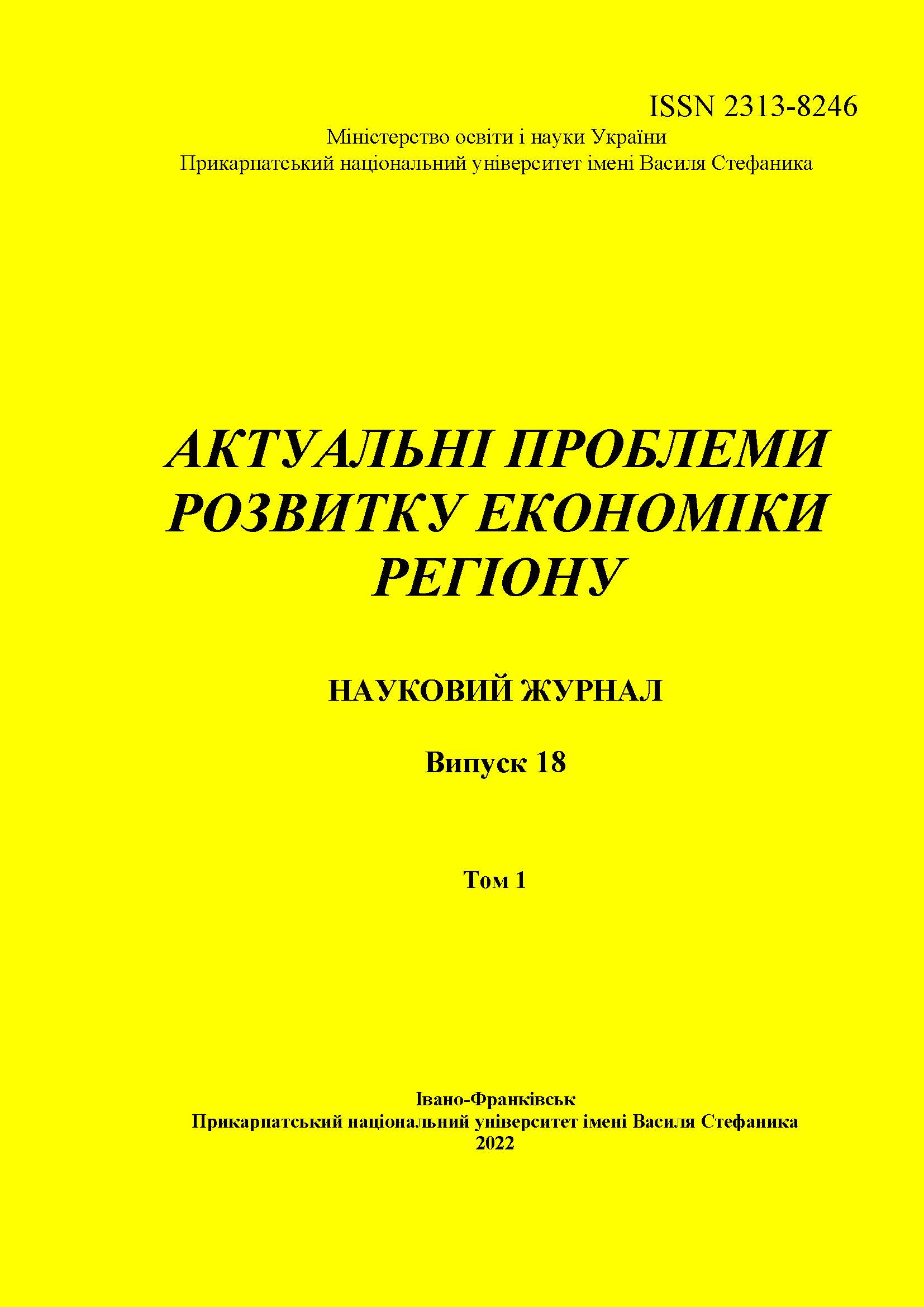DIGITAL TRANSFORMATION OF THE FINANCIAL SECTOR OF THE WORLD ECONOMY: TRENDS AND RISKS
DOI:
https://doi.org/10.15330/apred.1.18.111-122Keywords:
fintech, digital transformation, outsourcing, blockchain, investments, startups, fintech companies, cryptocurrencyAbstract
The aim of the article is to solve the scientific problem of identifying patterns of digital transformation of the financial sector of the world economy, systematization of factors and risks of this process, as well as substantiation of practical recommendations for their leveling.
To achieve the goal of the study used a set of general and special research methods: systematization and generalization, analysis, induction, scientific abstraction and explication, methods of descriptive statistics and visual analysis.
The overall global investment activity in fintechs was monitored, namely: the dynamics of direct and venture investments, as well as M&A agreements (cross-border mergers and acquisitions) for 2018-2021 were assessed. cross-border mergers and acquisitions; direct investment in fintech is relatively insignificant; in 2021 record for the studied period were venture investments in fintech; Virtually all fintech sectors are characterized by dynamic growth, among which the leaders are the blockchain subsector, cryptocurrency, welfare management technologies, and cybersecurity.
The article considers the factors of global spread of fintech and their digital transformation: declining confidence in traditional financial instruments and products, intensifying the spread of digitalization processes worldwide and industry and the objective advantage of using to meet the needs of entities, expanding Internet space and development mobile devices, popularization of social networks and messengers, global trends to increase the desire for innovation, the formation of dependencies on automated technologies.
The risks of digital transformation of the financial sector of the world economy according to the Financial Stability Board, the Bank for International Settlements, and the International Economic Forum are considered. Among which the risk of cyber attacks in the financial sector is one of the most dangerous.
Measures to reduce the risks of digital transformation of the financial sector of the world economy are outlined. In order to minimize the risks caused by the need to spread digital transformations in the fintech sector, it is advisable to ensure the creation of a regulatory framework governing customer relations through remote channels, and the activities of fintech companies. World experience shows that the ability to actively interact with technology companies in the development and implementation of innovative solutions, outsourcing of innovations or other forms of cooperation is an important factor in successful digitalization. It is also reasonable to develop a comprehensive digital strategy, both at the macro level and for each individual institutional participant in the financial sector.
The results of the study can be useful for the development of scientifically sound recommendations for preventing the risks of digital transformation of the fintech sector.
References
2. Barefoot, K., Curtis, D., Jolliff, W., Nicholson, J., and R. Omohundro. “Defining and Measuring the Digital Economy”. The Bureau of Economic Analysis US Department of CommerceWorking Paper, 2018, www.bea.gov/sites/default/files/papers/defining-and-measuring-the-digital-economy.pdf. Accessed 10 May 2022.
3. Mazaraki, A., and S.Volosovych. “Fintech in the system of social transformations.” Bulletin of the Kyiv National University of Trade and Economics, no. 2, 2018, pp. 5–16.
4. Viazovyi, S.M., and I.V. Pasichnyk. “Development of the fintech industry in Ukraine and its risks for banking.” Eastern Europe: Economy, Business and Governance, no. 4 (12), 2019, pp. 480–184.
5. Dudynets, L.A. “Development of financial technologies as a factor in modernization of the financial system.” Global and national economic problems, no. 22, 2018, pp. 794–798.
6. Kalashnikova, T.V., and S.A.Samokhina. “Development of the financial technology market in Ukraine as a factor in promoting financial inclusion.” Bulletin of KhNAU named after V.V. Dokuchaeva. Economic Sciences Series, no. 3, 2018, pp. 201–210.
7. Shevchenko, O.M. “Global trends in the development of the financial technology market and features of its functioning in Ukraine.” Efficient economy, no. 6, 2021. http://www.economy.nayka.com.ua/pdf/6_2021/88.pdf. Accessed 14 May 2022.
8. “Pulse of Fintech H2’21.” KPMG, 2022, assets.kpmg/content/dam/kpmg/xx/pdf/2022/02/pulse-of-fintech-h2-21.pdf. Accessed 17 May 2022.
9. Dzhuruk, N. “Fintech and commercial banks: competition and opportunities for cooperation.” Economic analysis, volume 30, 2020, www.econa.org.ua/index.php/econa/article/view/1749/6565656854. Accessed 21 May 2022.
10. Afonasova, M. A., Panfilova, E. E., Galichkina, M. A., and B.Ślusarczyk. “Digitalization in Economy and Innovation: The Effect on Social and Economic Processes.” Polish Journal of Management Studies, no. 19 (2), 2019, pp. 22-32. DOI: 10.17512/pjms.2019.19.2.02.
11. “Bloomberg Technology.” Bloomberg, www.bloomberg.com/technology. Accessed 21 May 2022.
12. Feyen, E., Frost, J., Gambacorta, L., Natarajan, H., and M. Saal. “Fintech and the digital transformation of financial services: implications for market structure and public policy by.” Monetary and Economic Department. Bank for International Settlements, July 2021, www.bis.org/publ/bppdf/bispap117.pdf. Accessed 21 May 2022.
13. “Decentralised financial technologies: Report on financial stability, regulatory and governance implications.” Financial Stability Board (FSB). June 2019, www.fsb.org/wp-content/uploads/P060619.pdf. Accessed 21 May 2022.
14. “The Global Risks Report 2021.” Wipo, www.wipo.int/edocs/pubdocs/en/wipo_pub_gii_2016.pdf. Accessed 21 May 2022.
Downloads
Published
How to Cite
Issue
Section
License
- Authors retain copyright and grant the journal right of first publication with the work simultaneously licensed under a Creative Commons Attribution NonCommercial NoDerivs 4.0 Unported License that allows others to share the work with an acknowledgement of the work's authorship and initial publication in this journal.
- Authors are able to enter into separate, additional contractual arrangements for the non-exclusive distribution of the journal's published version of the work (e.g., post it to an institutional repository or publish it in a book), with an acknowledgement of its initial publication in this journal.
- Authors are permitted and encouraged to post their work online (e.g., in institutional repositories or on their website) prior to and during the submission process, as it can lead to productive exchanges, as well as earlier and greater citation of published work (See The Effect of Open Access)


